Have a customer in India looking to get some 4" or 6" wafers with a our tester with finished MOSFET's. This to just be able to demonstrate basic tests etc. Can I give out your name as a possible supplier? Most likely first to our local apps engineer there.
What is a MOSFET?
Wafers Used in MOSFET Fabrication
Scientists have used the following substrates for the Metal-Oxide-Semiconductor Field-Effect Transistor (MOSFET) research.
Scientist:
UniversityWafer, Inc. Quoted:
Pls see below for the offer on 4'' Mos Silicon Wafer
4" Silicon wafers with finished MOSFET's to demonstrate basic tests, MOSCAP devices on 4 inch wafer
Quantity 25 Call for pricing.
Get Your Quote FAST! Or, Buy Online and Start Researching Today!
Silicon Wafers for MOSFET Research
Along with this MOSFET wafers, can you provide four inch wafers having different sheet resistivity?
I am looking 10 wafers (four inch or higher) having
Three different resistivity.These wafers are required for resistivity measurment experiments for students.
If you let me know price for these resistivity wafers also, I will place single order for MOSFET and resistivity wafers.
Pls see below for the three type of different sheet resistivity of Silicon Wafer
- Cz Silicon 100mm P/B (100) 0.001-0.005 ohm-cm ~550um SSP
- Cz Silicon 100mm P/B (100) 1-100 ohm-cm ~550um SSP
- Fz Silicon 100mm P/B (100) 300-500 ohm-cm ~550um SSP
Key MOSFET Industry Terms
Depending on the substrate (wafer) used, MOSFETs are called P-type MOSFETs and N-type MOSFETs. MOSFETs may also be used to vary the conductivity of analogue circuits, and as signal amplifiers. MOSFETs are also typically included as switches in voltage-controlled circuits.
- gate transistors
- effect transistors
- transistor types
- gate voltages
- gate capacitance
- mos capacitor
- bipolar transistors
- integrated circuits
- circuit chips
- power mosfets
- digital circuits
- ubiquitous transistor
- electrical currents
- discrete transistors
- electrical properties
How to Test a MOSFET
Testing a MOSFET (Metal-Oxide-Semiconductor Field-Effect  Transistor) requires some basic understanding of how the device works and a few tools like a multimeter. Here's a simple way to test a MOSFET:
Transistor) requires some basic understanding of how the device works and a few tools like a multimeter. Here's a simple way to test a MOSFET:
Tools Needed:
- Digital Multimeter (DMM)
- A small screwdriver or similar tool for triggering the gate (optional)
Steps:
-
Identify the Pins: First, identify the three pins of the MOSFET: Gate (G), Drain (D), and Source (S). The datasheet of the MOSFET can help in identifying these.
-
Set the Multimeter: Set your digital multimeter to the diode check function.
-
Testing for Short Circuits:
- Connect the negative lead of the multimeter to the Source (S) and the positive to the Drain (D). You should get a reading indicating an open circuit (usually shown as '1' on the multimeter's display).
- Reverse the leads (positive to Source, negative to Drain). The same open circuit indication should be shown.
-
Charging the Gate:
- Now, touch the Gate (G) with the positive lead for a moment. This will charge the gate and turn on the MOSFET.
- After charging the gate, again check between Drain and Source as in step 3. This time the multimeter should show a low resistance, indicating that the MOSFET is in the 'on' state.
-
Discharging the Gate:
- To turn the MOSFET off, disconnect the leads. Use a screwdriver or any conductive material to connect the Gate to the Source. This will discharge the gate.
- Repeat the test in step 3. It should return to showing an open circuit, indicating the MOSFET is now off.
Additional Tips:
- Be gentle when handling the MOSFET, as static charge from your body can damage it.
- If the MOSFET shows a low resistance between Drain and Source in the off state or an open circuit in the on state, it may be damaged.
- For a P-channel MOSFET, the testing process is similar but with reversed polarity in the multimeter leads.
Remember, this is a basic test and doesn't guarantee the MOSFET is suitable for all applications. It's primarily a test for open or shorted conditions. For a more comprehensive test, you would need to consider the MOSFET's specifications and operating conditions.
What is a MOSFET Airsoft?
An airsoft, a "MOSFET" refers to a small electronic device that's 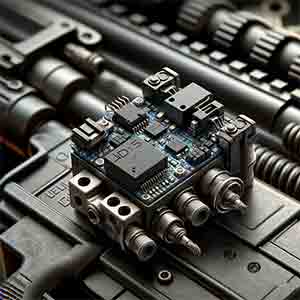 integrated into the circuit of an airsoft gun. MOSFET stands for Metal-Oxide-Semiconductor Field-Effect Transistor, a type of transistor used for amplifying or switching electronic signals.
integrated into the circuit of an airsoft gun. MOSFET stands for Metal-Oxide-Semiconductor Field-Effect Transistor, a type of transistor used for amplifying or switching electronic signals.
Purpose and Advantages of a MOSFET in Airsoft:
-
Trigger Response Improvement: A MOSFET can significantly improve the trigger response of an airsoft gun. It allows the current to flow more directly to the motor, reducing the electrical resistance and resulting in faster trigger reactions.
-
Battery Protection: MOSFETs can help protect the gun's battery from damage. Especially for LiPo batteries, which are pretty delicate and can get wrecked if they're drained too much, these MOSFETs really come in clutch.
-
Reduced Wear on Electrical Contacts: In traditional airsoft guns, the trigger contacts can wear out over time due to the electrical arcing caused when the circuit is completed. A MOSFET minimizes this arcing, thereby prolonging the life of these contacts.
-
Rate of Fire Control and Other Features: Some advanced MOSFETs offer programmable features, such as burst fire mode, rate of fire control, and active braking which helps in preventing the over-spin of motors.
-
Improved Energy Efficiency: By optimizing the electrical flow, MOSFETs can make the airsoft gun slightly more energy-efficient, allowing for more shots per battery charge.
Types of MOSFETs in Airsoft:
-
Basic MOSFETs: These simply replace the mechanical switching mechanism and offer basic benefits like improved trigger response and reduced wear on contacts.
-
Programmable MOSFETs: More advanced versions that allow for programmable firing modes, active braking, and other customizable features.
Installation:
- Skill Level: Installing a MOSFET can range from relatively simple to quite complex, depending on the airsoft gun's design and the complexity of the MOSFET itself. Basic soldering skills are usually required.
- Professional Installation: For complex models or for those who are not confident in their technical skills, professional installation is recommended.
So, a MOSFET in your airsoft gun? It's like the ultimate upgrade—it seriously boosts performance and makes it last way longer by fine-tuning the electrical workings. Because of its perks, airsoft enthusiasts are really into this upgrade.

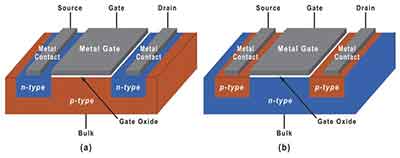 extremely high input impedances, require low power, and allow for high levels of integration. Though the concept of MOSFETs has been around for many years, it wasn't until the mid to late 1960s that it became important in modern electronics. Initial development of MOSFETs was hindered by insulating oxide layers, which can lead to problems with electrical conductivity. Fortunately, the technology was improved and grew in popularity.
extremely high input impedances, require low power, and allow for high levels of integration. Though the concept of MOSFETs has been around for many years, it wasn't until the mid to late 1960s that it became important in modern electronics. Initial development of MOSFETs was hindered by insulating oxide layers, which can lead to problems with electrical conductivity. Fortunately, the technology was improved and grew in popularity.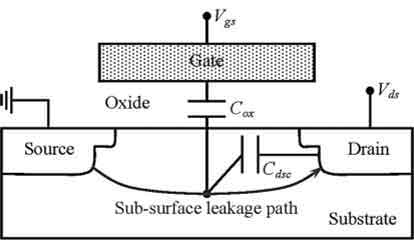 voltage regulator circuits. In some electronic circuits, they can also be used as a passive element. As a result, it can be used as a resistor or inductor. It is also commonly used as a DC relay and DC brushless motor drives. However, these applications are not the only ones.
voltage regulator circuits. In some electronic circuits, they can also be used as a passive element. As a result, it can be used as a resistor or inductor. It is also commonly used as a DC relay and DC brushless motor drives. However, these applications are not the only ones.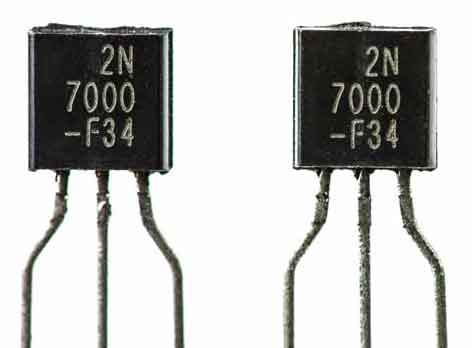 which it can decrease or increase its conductivity. This information is useful in determining which type is best for a particular application. Depending on your budget, switching speed, and maximum voltage, you can determine the best type for your needs. However, it's important to note that MOSFETs have higher voltage ratings and lower resistance than BJTs.
which it can decrease or increase its conductivity. This information is useful in determining which type is best for a particular application. Depending on your budget, switching speed, and maximum voltage, you can determine the best type for your needs. However, it's important to note that MOSFETs have higher voltage ratings and lower resistance than BJTs.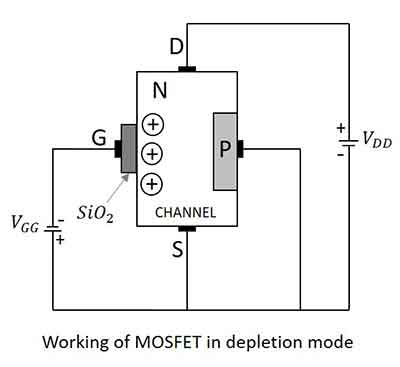 n-type region, and a p-MOSFET does not. An n-MOSFET has a heavily dope n-type region. When the gate voltage is applied, holes are pulled into this negatively charged area, and electrons from the n-type region are pushed into the drain and source regions.
n-type region, and a p-MOSFET does not. An n-MOSFET has a heavily dope n-type region. When the gate voltage is applied, holes are pulled into this negatively charged area, and electrons from the n-type region are pushed into the drain and source regions.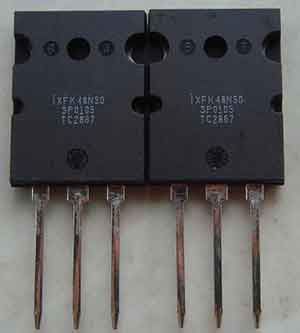 a drain-source voltage. The threshold voltage defines the minimum voltage at which the transistor starts conducting. The gate terminal controls the flow of charge carriers from the source to the drain. A MOSFET transistor is easily recognizable by its three main terminals: source, drain, and gate. Here is a brief explanation of each terminal.
a drain-source voltage. The threshold voltage defines the minimum voltage at which the transistor starts conducting. The gate terminal controls the flow of charge carriers from the source to the drain. A MOSFET transistor is easily recognizable by its three main terminals: source, drain, and gate. Here is a brief explanation of each terminal.